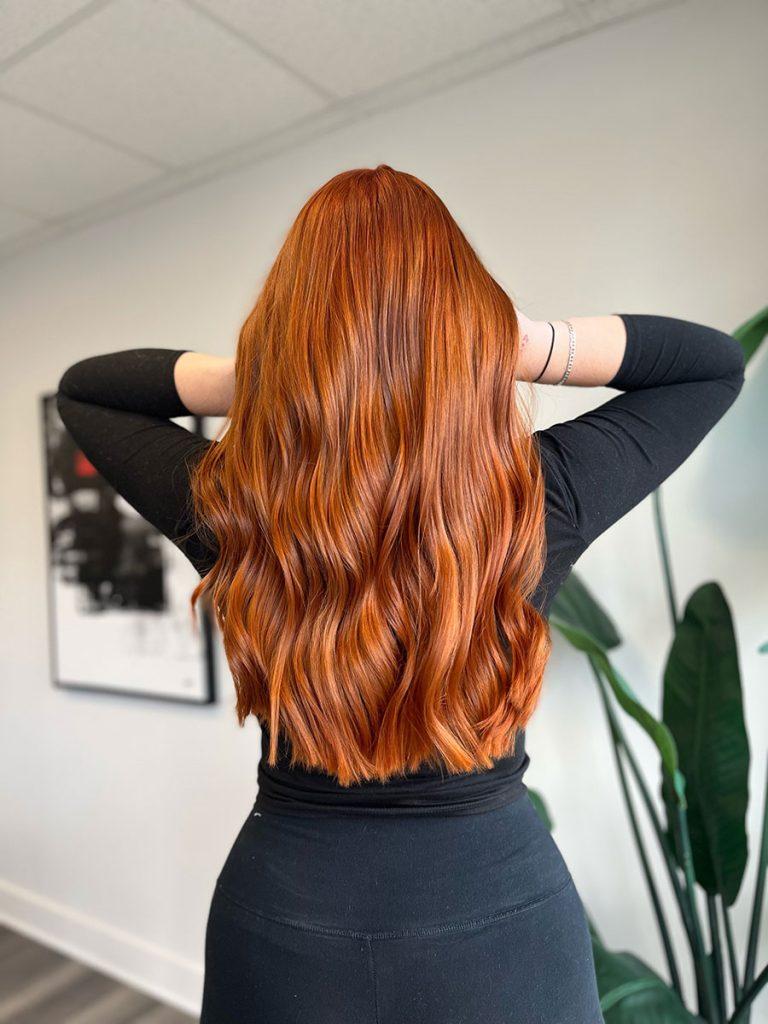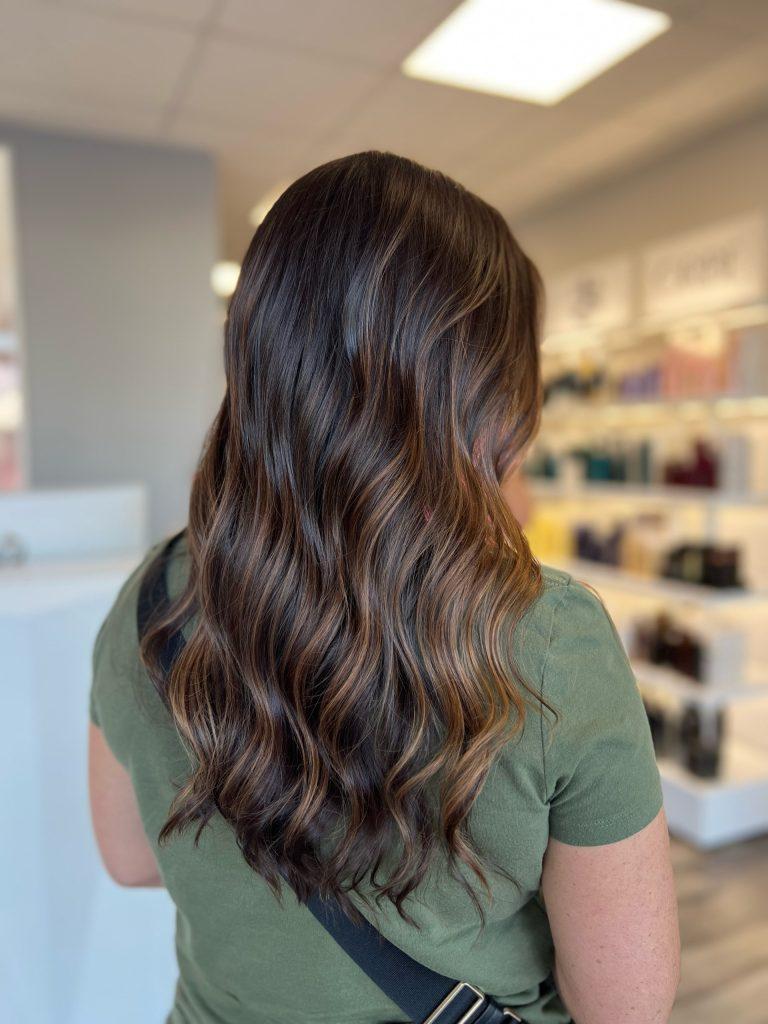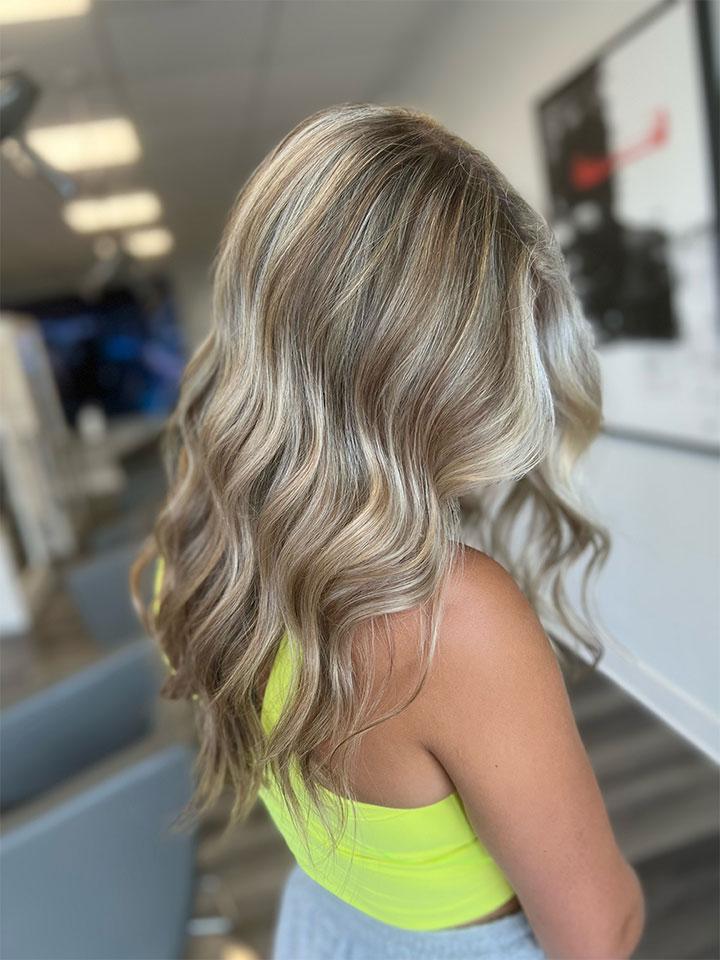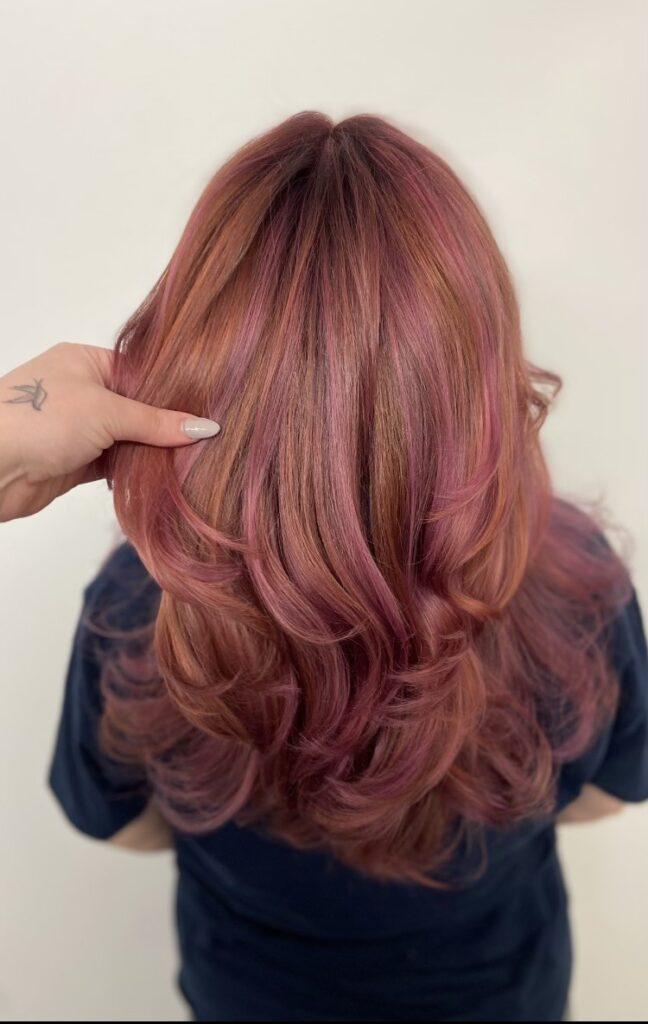

Choosing the Right Hair Color for Your Skin Tone: A Comprehensive Guide
Choosing the right hair color can feel like solving a puzzle, especially with so many shades and styles out there. Have you ever spent hours at a salon wondering if the color you picked would truly complement your skin tone? You’re not alone! The journey to find the perfect hue often involves trial and error, but understanding the basics about skin tones and hair colors can save you both time and frustration. In this guide, we’ll break down how to identify your skin’s undertone and explore hair color options that enhance your natural beauty while giving you the confidence to rock whatever shade you desire.
To choose the right hair color for your skin tone, start by identifying your undertone—warm, cool, or neutral—using methods like the vein test or jewelry test. Once you know your undertone, select hair colors that harmonize with it; for instance, warm tones work best with honey blonde or golden brown shades for warm undertones, while cool tones pair well with ashy or platinum shades for those with cool undertones.
Identifying Your Skin Undertones
Understanding your skin undertone can significantly impact not only your hairstyle decision but also how your overall appearance is perceived. The three general categories—cool, warm, and neutral—each implement their unique influence on which colors will enhance your features. Failing to account for these nuances can lead you down the path of unflattering choices that may not yield the results you hoped for.
Methods to Determine Skin Undertones
- Vein Test: One of the simplest methods to determine your skin’s undertone is through the vein test. By looking closely at the veins on the inside of your wrist, you can gather some important clues. If they appear blue or purple, congratulations! You most likely have cool undertones. In contrast, if your veins appear greenish, it indicates warmer tones in your skin. If it’s unclear, with both blue and green hues visible, then you’re blessed with neutral undertones—a perfect blend!
- Paper Test: Another straightforward technique is the paper test. Hold a white piece of paper up against your face in natural light. This provides great contrast to see how your skin responds. If your skin looks more yellow or golden next to the paper, it’s an indicator that you possess warm undertones. On the flip side, if it appears pink or rosy against the white paper, you’ve got those cool undertones shining through.
These practical methods serve as helpful tools to navigate through color selection when choosing hair shades that complement—but they’re just the beginning.
Additional Indicators
Beyond just these tests, there are other indicators that can help affirm what you’ve identified so far about your undertone. For instance, consider how different types of jewelry sit against your skin: typically, silver accentuates cool undertones while gold complements warmer tones beautifully. Moreover, if you find yourself tanning easily under the sun, it often points toward warm undertones; conversely, if you tend to burn instead of tan, that’s a strong sign of cooler tones.
As you start to apply these insights into practice, the process of finding complementary hair colors becomes clearer and more aligned with your personal style.


Natural Hair Color Assessment
Your natural hair color is more than just a mere starting point; it’s an important piece of the puzzle that influences which shades will harmonize with your skin tone. The relationship between your natural hair shade and overall appearance can guide you in making choices that accentuate your best features while avoiding those that clash.
Step-by-Step Guide
- Identify Natural Hair Shade: The first step is all about taking an honest assessment of your natural hair color. You want to ensure you’re looking at it in the best possible light, quite literally. Find a spot by a window where there’s plenty of natural sunlight streaming in. As you examine your hair, try reminiscing with childhood photos, seeking out images where your hair’s original hue shines bright. This method can be surprisingly revealing; perhaps you’ll notice hints of past highlights or tones that have faded over the years due to environmental factors or dyeing. If you still find it difficult to pinpoint your exact shade, consider asking friends or family for their insight. Sometimes, others may see things we overlook ourselves. Your family might recall how your hair appeared at various life stages—before those teenage experiments with dye! Moreover, understanding your base color is crucial because specific hues will enhance or detract from the overall appearance based on this foundation.
- Note Color Patterns: Once you’ve identified your natural shade, the next step is to examine any underlying patterns within your hair color. Are there strands that seem lighter than others? This might indicate the presence of natural highlights that could provide clues about what colors might complement your new look. If you observe darker sections subtly weaving through the lighter tones, they could serve as lowlights to draw richer shades into play. This brings us to a compelling consideration: do those natural highlights lean warm or cool? A careful assessment of hue patterns can help in determining whether warmer shades like honey blonde or cooler tones such as ash brown should reign supreme in your hair coloring journey.
Being attentive to these layers can reveal surprising opportunities for complementary color choices that not only suit your natural beauty but also fit seamlessly into your lifestyle. Recognizing how these elements influence each other sets the stage for exploring specific shades designed for various undertones, paving the way for optimal choices that make you shine.
Perfect Hair Shades for Different Tones
Hair color plays a crucial role in enhancing and complementing different skin tones, creating a harmonious and balanced appearance. The key to finding the perfect shade is understanding how hair colors work with your skin undertones. Here’s a breakdown of how hair colors can bring out the best in various skin tones:
- Light Skin with Cool Undertones: If you have light skin with cool undertones, shades like platinum blonde or icy tones are your best friends. These colors help brighten your complexion and avoid the dullness that often comes with brassy hues. Avoiding overly warm tones is essential, as they can clash with your cool undertones and make your skin appear dull. Cool blonde shades give a fresh, radiant look without compromising your natural glow.
- Medium Skin with Warm Undertones: Medium skin with warm undertones pairs beautifully with a range of warm shades. Colors like honey brown and caramel not only enhance the warmth of your complexion but also add depth and vibrancy to your overall appearance. These tones give off a sun-kissed glow, making your features appear more inviting and radiant. The warmth in these shades complements your natural skin tone, providing a rich, harmonious look.
- Dark Skin with Warm Undertones: For those with dark skin and warm undertones, vibrant shades are the way to go. Colors like honey-blonde shades blended with deeper browns and golden highlights are especially flattering. These tones provide a lively contrast that accentuates your features while highlighting your natural warmth. Ombre and balayage styles work wonderfully, allowing for multiple shades that blend seamlessly to elevate your look.
- Dark Skin with Neutral Undertones: If you have dark skin with neutral undertones, you have the flexibility to experiment with a wide spectrum of hair colors. From ashy tones to bold, fiery reds, the options are endless. Neutral undertones allow you to embrace a variety of shades without worrying about them clashing with your skin. Staying close to your natural root color will provide a subtle lift, enhancing your natural beauty with minimal effort.
Ultimately, the perfect hair color is one that makes you feel confident and celebrates your unique beauty.


Enhancing Your Look with Highlights
Highlights can be a game changer, adding dimension and vibrancy to your hairstyle. Think about it: just as a painter uses light and shadow to create depth on a canvas, highlights do the same for your hair. They catch the light beautifully, drawing attention to your features and providing that coveted sun-kissed glow. But not all highlight techniques are created equal; each has its own flair and effect.
Types of Highlights
- Foil Highlights: Foil highlights are like creating a masterpiece with controlled strokes. Imagine sections of your hair wrapped in foil—this technique isolates the strands you want to lighten, allowing for precise application of color. Yes, this method might take longer due to the meticulous nature of placement, but many people love the dramatic results it yields. The precision of foil highlights means they work wonders for those seeking a bolder statement, especially if they choose high-contrast shades.
- Balayage: On the other hand, we have balayage—a wonderfully artistic approach where less structure equals more creativity. Imagine an artist lightly painting brushstrokes onto a canvas. This technique involves freehand painting color onto the strands for a beautifully blended appearance. The best part? It requires less upkeep since it grows out naturally, making it perfect for those who prefer a low-maintenance style while still enjoying depth in their hair. It creates that effortless “I just came back from a beach vacation” vibe that many aspire to achieve.
When deciding between these methods, think about your lifestyle and how often you’re willing to touch up your hair. While foil highlights may demand more frequent visits to the salon for maintenance, balayage rewards you with versatility and longevity.
Vibrant and Creative Color Choices
If you’re feeling adventurous, selecting a vibrant hair color can transform your entire appearance and boost your confidence. Colors like electric blue, passionate purple, and even vivid red can distinguish your style and express your personality in ways that natural tones often cannot. However, it’s crucial to harmonize these striking choices with your skin undertone for the most flattering results. If you have warm undertones, you may want to gravitate toward rich copper or golden hues instead of cooler shades like ash blue, which might wash you out.
While bold colors are undoubtedly eye-catching, they do come with a slight caveat: they typically require more maintenance than traditional hair colors. Frequent touch-ups might be necessary to maintain vibrancy since many of these fun shades can fade faster than neutral tones. For instance, pastel shades tend to soften quickly, often requiring new applications every 4 to 6 weeks. Despite this added upkeep, the opportunity to showcase a unique identity is worth the effort for many.
Before diving into these vibrant options, it’s advisable to have a consultation with a professional stylist who understands color theory and can help select shades that align with your skin tone. This preparatory step ensures that the chosen hues flatter your overall complexion rather than combat it. For example, if you have cool undertones, opting for fiery reds can create a striking contrast that enhances your features rather than overwhelms them.
Hair Coloring Techniques and Tips
The journey to achieving the right hair color is more than just picking a shade; it’s also about choosing an effective application method. This can dramatically affect your final look. There are various hair coloring techniques, each with its own unique benefits designed to suit different hair types, textures, and desired outcomes.
At-Home vs. Professional Coloring
When deciding whether to color your hair at home or go for professional services, weighing both options is essential. At-home kits offer convenience, allowing you to color whenever you please without making an appointment. They can be cost-effective but often lack the precision needed for complex styles or shades.
On the other hand, professionals bring expertise that ensures a more accurate color match and application. These artists know how to blend colors perfectly, adjust formulas for your specific hair condition, and provide treatments to safeguard hair health during the process. Both choices present pros and cons, so it’s crucial to focus on your individual goals before committing to a method.
Tips for Best Results
- Hair Health: Before embarking on any hair coloring adventure, assess your hair’s health. If it’s damaged or overly dry, coloring may lead to unwanted results. Strong, healthy hair absorbs color better and allows it to adhere longer. A moisturizing treatment or deep conditioning session days prior can help revive tired strands and prepare them for the dye.
- Patch Test: Never underestimate the importance of a patch test! This small step can save you from disastrous repercussions like allergic reactions or unexpected color outcomes. Apply a test spot according to the kit’s instructions at least 48 hours before full application; this will give you peace of mind as you embark on your coloring journey.
As you begin your coloring process with care and intention, remember that technique plays an equally vital role in achieving stunning results.
Coloring Techniques
One of the most popular methods nowadays is balayage, which offers an effortless sun-kissed appearance by painting color onto the hair freehand. This technique works beautifully across various skin tones and minimizes upkeep compared to solid colors. Ombre is another lovely option, transitioning from darker roots to lighter ends—think of it as nature’s gradient—and adding dimension effortlessly. Those with medium to dark skin tones find this style adds warmth without overwhelming their natural beauty.
In contrast, foil highlights are ideal for those craving a brightened look without drastic changes. By isolating sections of hair using foils, precise highlights can enhance your overall expression, particularly appealing for light to medium skin tones. Each technique requires its own set of considerations but finding what resonates with your personal style will make the entire process enjoyable and rewarding.
Ultimately, understanding these techniques empowers you to make informed decisions about how to achieve that perfect color while maintaining your hair’s vitality—ensuring that every strand reflects not just beauty but health as well. In this colorful journey of transformation, embracing your uniqueness through the right hair color choice can elevate not only your look but also your confidence.
Discover Your Perfect Shade at Salon Voss
Ready to transform your look with stunning hair color? At Salon Voss in Fredericksburg, VA, our expert stylists specialize in helping you find the perfect shade to complement your features and style. From bold transformations to subtle enhancements, we use premium products and advanced techniques to deliver vibrant, long-lasting results. Trust our team to craft a customized color that brings out your natural beauty—request an appointment today and let us create the perfect hue for you!

 Request An Appointment
Request An Appointment